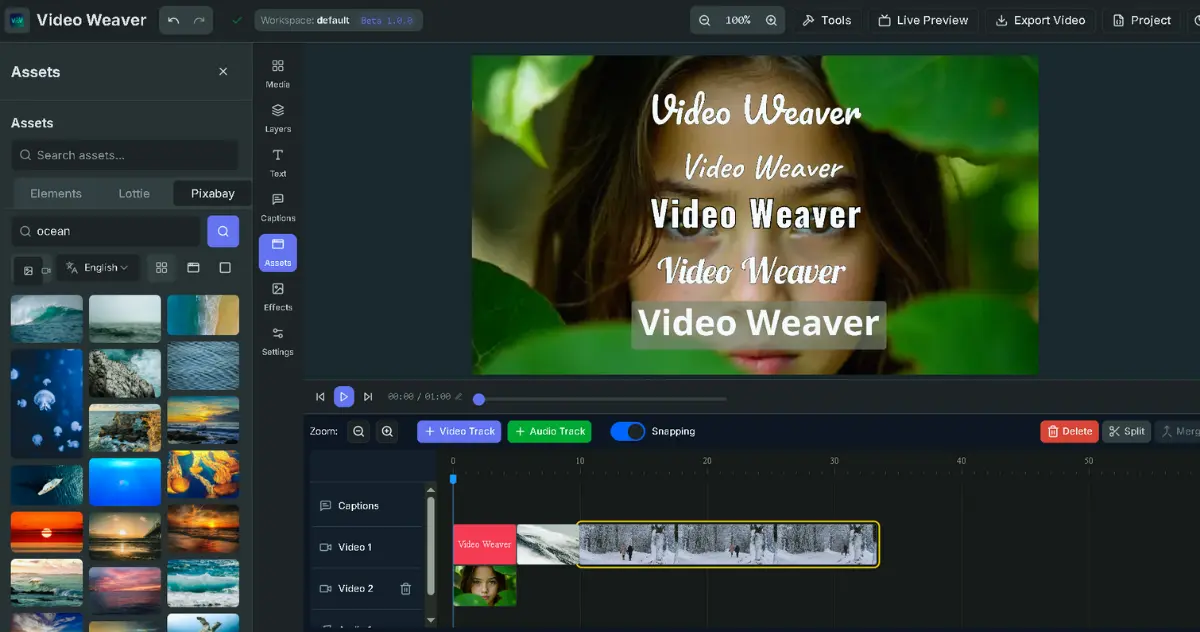The AI world has a new challenger! Developed by the Weibo AI team, the VibeThinker-1.5B model, with only 1.5 billion parameters and extremely low training costs, has defeated massive models hundreds of times its size in several math and programming benchmarks. Does this mean the future of AI is no longer ’the bigger, the better’? This article delves into the unique training methods behind VibeThinker-1.5B, its astonishing performance, and the implications it brings to the AI field.
Have you ever thought that only colossal models with hundreds of billions, or even trillions, of parameters could dominate the world of complex logical reasoning? For a long time, the AI field seemed to follow an unwritten rule: the larger the model, the more powerful it is. However, the recently open-sourced VibeThinker-1.5B model from the Weibo AI team has challenged this “common sense” in a surprising way.
This model has only 1.5 billion parameters and a training cost as low as $7,800, yet it has demonstrated reasoning capabilities comparable to, and in some cases surpassing, large models like GPT OSS-20B Medium in several difficult math and programming competition benchmarks. How was this achieved?
Small Size, Big Power: The Astonishing Performance of VibeThinker-1.5B
Let’s first look at VibeThinker-1.5B’s “track record.” In the three major math benchmarks—AIME24, AIME25, and HMMT25—its scores comprehensively surpassed the DeepSeek R1 model, which has over 400 times its parameter size. Specifically:
- AIME24: 80.3 vs. 79.8
- AIME25: 74.4 vs. 70.0
- HMMT25: 50.4 vs. 41.7
These results are not just a numerical victory. More importantly, they prove that small models, after careful design and training, have the full potential to compete with giant models in complex logical reasoning tasks. Even more impressively, the base model of VibeThinker-1.5B scored very low on these tests, meaning its excellent performance is not a fluke but a direct result of its unique training methods.
In addition to mathematical reasoning, VibeThinker-1.5B is also outstanding in code generation. In LiveCodeBench V6, a test that evaluates real-world programming capabilities, it slightly outperformed Magistral Medium with a score of 51.1 to 50.3, once again highlighting its strong reasoning performance.
The Secret to Success: The “Spectrum-to-Signal Principle”
So, how did VibeThinker-1.5B achieve such remarkable performance with limited resources? The answer lies in its innovative post-training method—the “Spectrum-to-Signal Principle” (SSP).
This principle may sound abstract, but its core idea is quite intuitive. Traditional model training methods are often like driving on a one-way street; while the direction is clear, it’s easy to miss other possibilities. The SSP framework is different, dividing the training process into two main phases:
Spectrum Phase: During the Supervised Fine-Tuning (SFT) stage, the model employs a “two-stage diversity-exploring distillation” technique. In simple terms, it encourages the model to explore a wide variety of problem-solving approaches and solutions, rather than just settling for one correct answer. This is like asking a student not only to write down the answer but also to try multiple different methods, thereby broadening their thinking and forming a wide “spectrum” of solutions.
Signal Phase: Next, in the Reinforcement Learning (RL) stage, the model uses the “MaxEnt-Guided Policy Optimization” (MGPO) framework. The goal of this phase is to reinforce the most accurate and efficient “signals” from the diverse solutions generated earlier. The model pays special attention to problems it is still uncertain about, learning efficiently from uncertainty to ultimately lock in the optimal problem-solving strategy.
Through the systematic integration of these two phases, VibeThinker-1.5B establishes “diversity” as its core design principle, enabling it to develop powerful and robust reasoning capabilities that surpass traditional training paradigms while maintaining a small size.
What Does This Mean for the Future of AI?
The emergence of VibeThinker-1.5B is not just a technological breakthrough; it brings profound implications for the entire AI research and application field.
First, it strongly challenges the “parameter-is-everything” viewpoint. For a long time, the industry has widely believed that the key to improving model capabilities is to continuously increase the parameter scale. But the success of VibeThinker-1.5B proves that innovative training architectures and optimization strategies can largely compensate for the lack of parameter scale, achieving a “small-to-win-big” effect.
Second, this significantly lowers the barrier to entry for high-end AI research. The training and inference costs of giant models are extremely high, often affordable only by tech giants. VibeThinker-1.5B, with a training cost of less than $8,000, has achieved world-class performance. This will undoubtedly promote the popularization of AI technology, allowing more small and medium-sized enterprises, startups, and independent researchers to participate in cutting-edge AI development.
How to Get Started with VibeThinker-1.5B?
If you are interested in this model, the good news is that the Weibo AI team has open-sourced the model weights and technical report for VibeThinker-1.5B on Hugging Face and Github. You can download the model yourself and test it in your own projects.
According to official recommendations, this model is particularly suitable for solving competition-style math and programming problems. For best results, the following parameter settings are recommended for inference:
temperature: 0.6 or 1.0max_token_length: 40960top_p: 0.95top_k: -1
Conclusion: Is Spring Coming for Small Models?
The debut of VibeThinker-1.5B feels like a breath of fresh air for the AI field. It shows us that besides continuously piling on computing power and parameters, we can also tap into AI’s potential through smarter algorithms and architectural designs.
Of course, this does not mean that large models will exit the historical stage. But in many specific domains, especially in scenarios requiring efficient reasoning capabilities, small and beautiful, small and refined models like VibeThinker-1.5B will undoubtedly play an increasingly important role. Perhaps this is the necessary path for AI to mature and become widespread.




